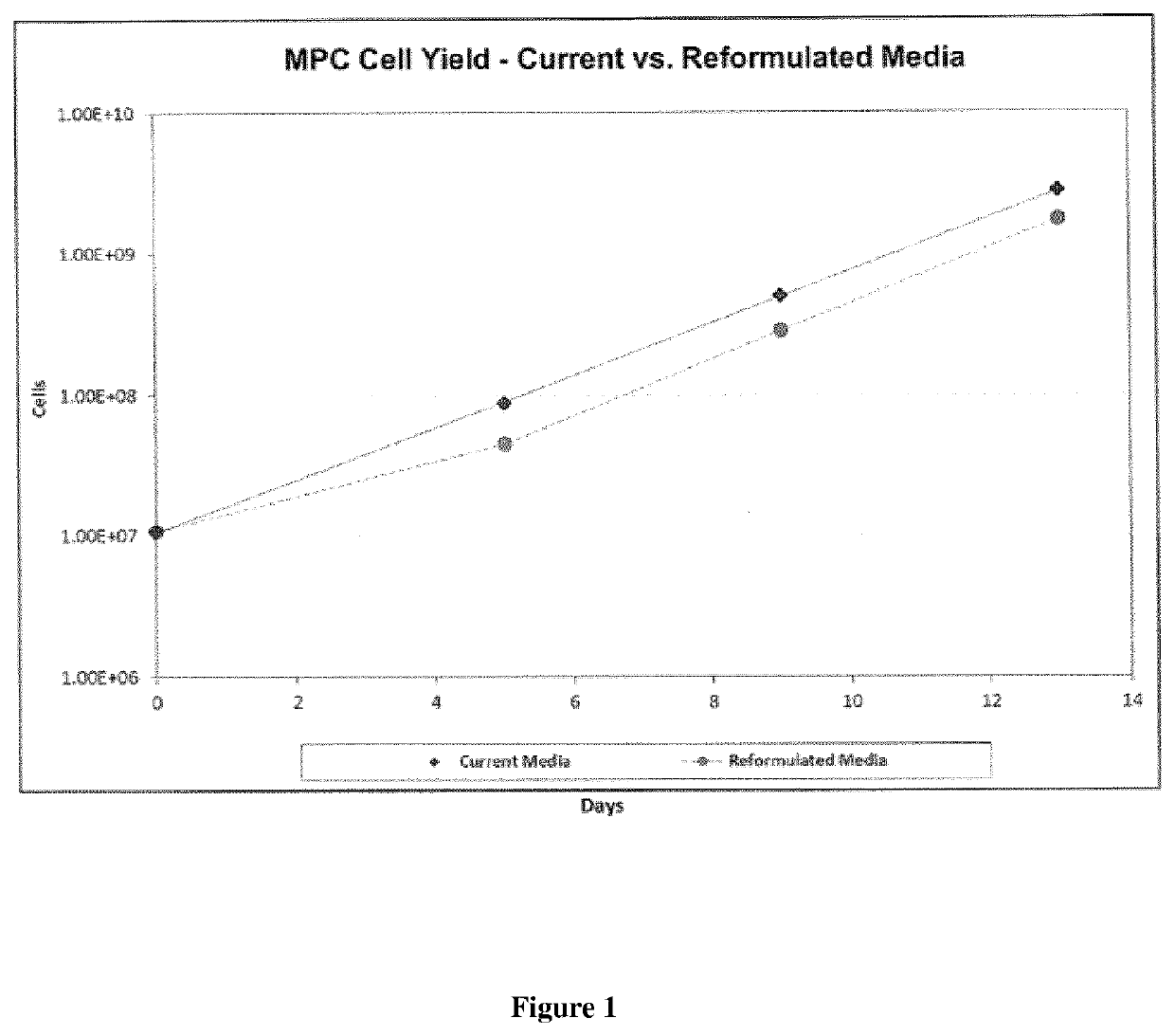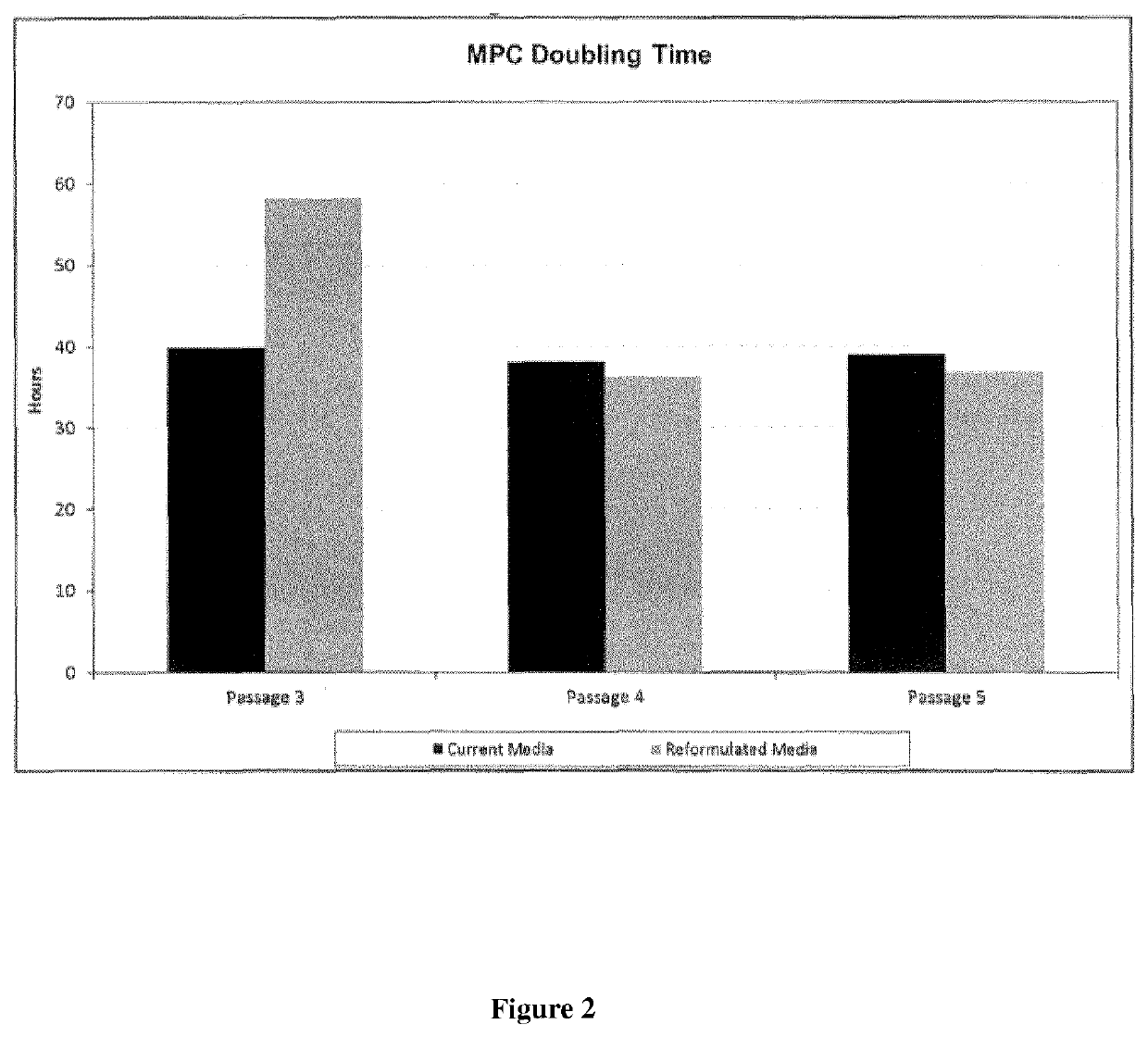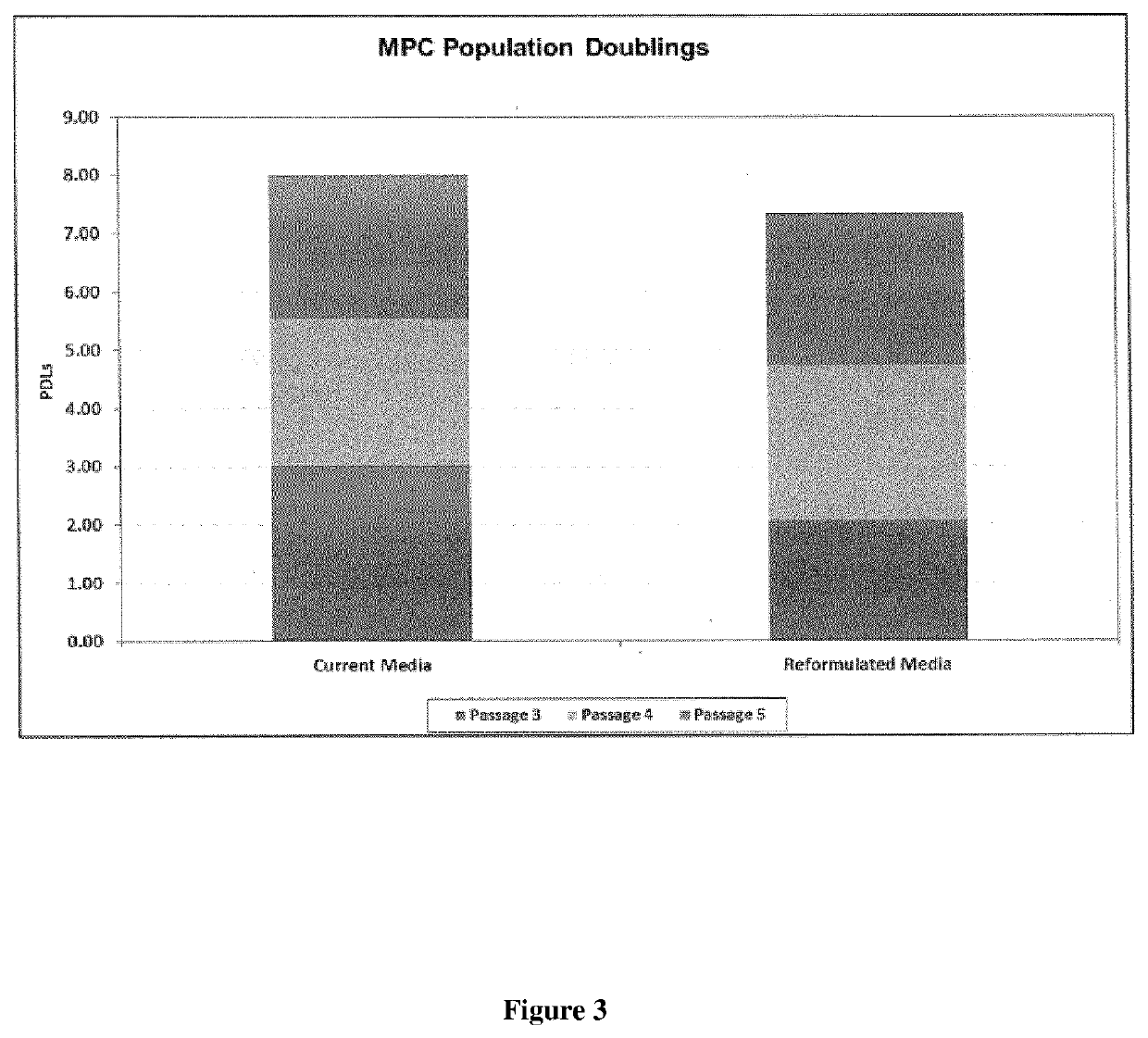Stem cell composition
a technology of stem cells and compositions, applied in the field of stem cells, can solve the problems of limited use of stem cells alone to promote angiogeneisis, drawbacks of genetically modified stem cells, etc., and achieve the effect of promoting angiogeneisis
- Summary
- Abstract
- Description
- Claims
- Application Information
AI Technical Summary
Benefits of technology
Problems solved by technology
Method used
Image
Examples
example 2
Culture Media—Process A
[0203]The Alpha modification of Eagle's minimum essential media (MEM) with Earle's balanced salts, commonly referred to as Eagle's Alpha MEM, contains non-essential amino acids, sodium pyruvate, and additional vitamins. These modifications were first described for use in growing hybrid mouse and hamster cells (Stanners et al. 1971).
[0204]Eagle's Alpha MEM media suitable for culturing primary stem cells can be obtained from a variety of sources, including Life Technologies and Sigma.
[0205]A detailed method of establishing primary stem cell cultures, including the required growth factors used in the Exemplified processes is described in Gronthos and Simmons 1995.
[0206]In Process A, Eagle's Alpha MEM media supplemented with 10% fetal calf serum, L-ascorbate-2-phosphate (100 μM), dexamethasone (10-7 M) and / or inorganic phosphate (3 mM) was used for culturing stem cells.
example 3
Culture Media—Process B
[0207]In Process B, the Eagle's Alpha MEM culture media used in Process A was modified (modified Alpha MEM) by:[0208]replacing the long acting ascorbic acid derivative L-ascorbic acid-2-phosphate with a short acting ascorbic acid derivative Sodium L-ascorbate (50 mg / L);[0209]reducing FCS from 10% v / v to 5% v / v;[0210]supplementing with non-fetal serum (5% v / v).
TABLE 1Summary of the differences between Processes A and BProcess AProcess BMedia (Change applicable to Thaw Feed, Passage)Alpha MEMModified media10% v / v FCS50 mg / L Sodium L-ascorbate replaces L-ascorbic acid-2-phosphate5% v / v FCS5% v / v non-fetal serumCryopreservation Formulation(50% Alpha-MEM / 42.5% ProFreeze / 7.5% DMSO)Alpha MEMModified Alpha MEM10% v / v FCS50 mg / L Sodium L-ascorbate replaces L-ascorbic acid-2-phosphate5% v / v FCS5% v / v non-fetal serum
example 4
ure
[0211]Mesenchymal precursor cells (MPCs) were obtained from a single donor and stored following cryopreservation.
[0212]In general terms, cell culture involved the following steps:
[0213]Cryopreserved MPCs were thawed, seeded at 10,000 cells / cm2, and grown in either starting culture medium (Process A; n=3) or modified culture medium (Process B; n=3) to 90% confluence at 20% 02, 37° C.
[0214]To generate conditioned medium, growth medium was replaced with EBM-2 basal medium (Lonza) supplemented with FCS at a volume of 200 μl medium / cm2. Cells were cultured for an additional 3 days after which medium was collected and centrifuged to remove any cells and the resulting supernatant collected and stored at −80° C.
[0215]Growth factor concentrations were measured using the Luminex platform using commercially available kits (Millipore).
[0216]Following cell culture, MPC growth dynamics were assessed (see FIGS. 1-3). No significant changes in cell growth, MPC doubling times or population doubli...
PUM
 Login to View More
Login to View More Abstract
Description
Claims
Application Information
 Login to View More
Login to View More - R&D
- Intellectual Property
- Life Sciences
- Materials
- Tech Scout
- Unparalleled Data Quality
- Higher Quality Content
- 60% Fewer Hallucinations
Browse by: Latest US Patents, China's latest patents, Technical Efficacy Thesaurus, Application Domain, Technology Topic, Popular Technical Reports.
© 2025 PatSnap. All rights reserved.Legal|Privacy policy|Modern Slavery Act Transparency Statement|Sitemap|About US| Contact US: help@patsnap.com



